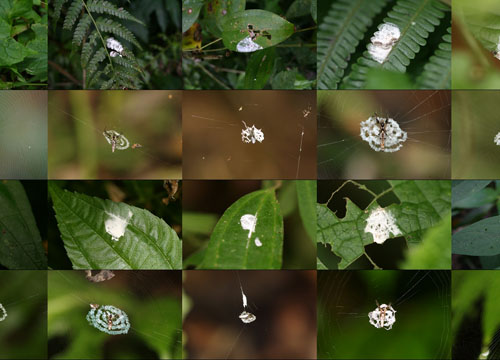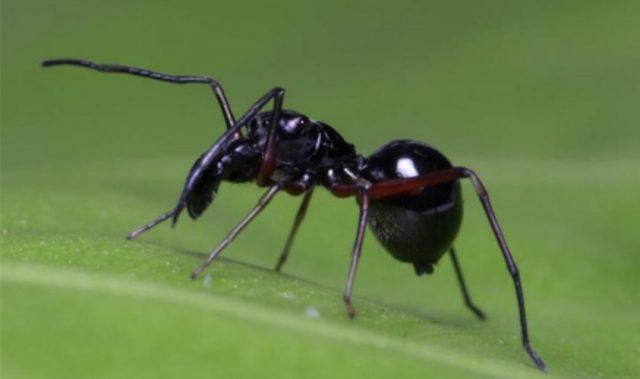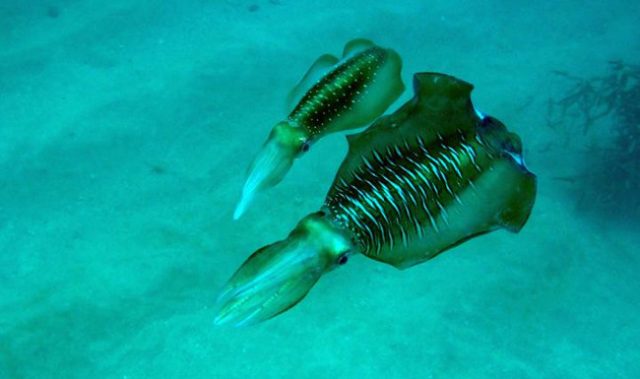
AsianScientist (May 30, 2014) – Scientists have found that the orb-web spider uses its body colorations and web decorations to disguise itself as bird droppings, thereby eluding predatory wasps.
The biological world is replete with examples of plants and animals that use camouflage or mimicry to fool predators. Masquerading is a particular form of camouflage where the animal’s body color and shape mimic an inanimate object. Juvenile orb-web spiders (Cyclosa ginnaga) decorate their webs with conspicuous white silk discs that, to human eyes, bear a striking resemblance to bird droppings.

“The C. ginnaga spider body coloration and web decoration, when combined, looked pretty much like bird droppings. We hypothesized that these spiders make themselves look like bird droppings in an attempt to prevent themselves from being detected by predators,” said Dr. Tso I-min, who led the study.
Tso and his team from the National Chung-Hsing University and Tunghai University in Taiwan present evidence in support of this hypothesis with their research recently published in the journal Scientific Reports.
Using a colorimetric analysis, they first showed that the contrast between spiders and bird droppings was below the threshold of discrimination for wasp vision. They then went on to show that disruptions to the spiders’ disguise resulted in increased predation.
“In order to study whether the orb-web spider’s disguise was effective against wasp predators, we used markers to color the spiders black and charcoal power to darken the silk discs. We then set up cameras in front of the webs to observe the rates of predation, collecting over 400 hours of footage,” explained Tso.
“We found that spiders on decorations that were darkened were as much as four times more likely to be attacked by wasps than spiders on unmanipulated decorations, regardless of whether the spiders themselves were darkened or not. These results provide the first empirical evidence that bird dropping-masquerading can effectively reduce the predation risk of an organism.”
Tso believes that bird dropping masquerades are actually quite common in the natural world, noting that some bolas and crab spiders have been observed to place silks around them when perching on leaves. Nonetheless, the authors suggest that further tests should be performed to rule out alternative explanations.
“It is very difficult to assess the psychology of these predators. We suggest recording predators’ behavioral responses to bird droppings and see if that is similar to the responses to the spider plus decoration combination. Perhaps such data can help us determine whether these predators really treat the spider/decoration combination as bird dropping.”
The article can be found at: Liu et al. (2014) Evidence of Bird Dropping Masquerading by a Spider to Avoid Predators.
——
Copyright: Asian Scientist Magazine; Photo: Liu Min-Hui, National Chung-Hsing University.
Disclaimer: This article does not necessarily reflect the views of AsianScientist or its staff.












